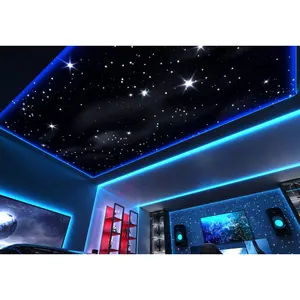

Signal Fire AI-9 Fiber Welding Machine 6 Motor Automatic Main Line Fiber Optic Cable Fusing Equipment Fusion Splicer


SHFO-GJYXCH G652D GJYXCH Fiber Optic Wire FTTH Cable Outdoor 2 Core Fiber Cable Ftth G652D Type Fiber Optical Cable




















Fiber optic light transmits light from a light source to a distant place using optical fiber, a flexible fiber constructed of glass or plastic. It is made up of a core and cladding (coating) that traps light and enables long-distance light transmission. There are numerous applications for LED fiber optic light, which are primarily focused on leveraging the fiber's distinctive properties as well as its unique characteristics. The LED fiber optic light is preferred for jobs such as wire bonding or soldering of fine-pitch components.
Fiber has various advantages for remote lighting, some of which are more essential for specific types of applications than others. Because the light source is remote, fiber optic light fixtures are heat free; the fiber optic light cables convey light while isolating heat from the fiber optic light sources from the illumination point; this is a significant factor when illuminating delicate artifacts, such as in museum displays, that could be destroyed by heat or bright light. Underwater lighting, such as that used in swimming pools and fountains, or illumination in hazardous environments, can be done securely with fiber optic light strands since the fiber is nonconductive and the power for the LED fiber optic light sources source can be located in a safe area.
Fiber optic light installation does not require installing electrical cables to the light locator and then installing bulky light fixtures with one or more bulbs on location. Battery-operated fiber optic lighting can be paired with lenses to create highly focused light in relatively small locations, which is useful for museum exhibits and jewelry displays, or simply to precisely light a defined region.
Fiber optic light-ups use optical fiber as a "light pipe," transferring light from a source to a remote place via the fiber. The light may be emitted from the end of the fiber optic light tubes, providing a miniature spotlight effect (also known as "end glow"), or from the outside of the fiber, like a neon or fluorescent tube (also known as "side glow"). The light source is sometimes referred to as a "fiber optic illuminator," and it consists of a powerful light source as well as optics to efficiently focus light into the fiber.